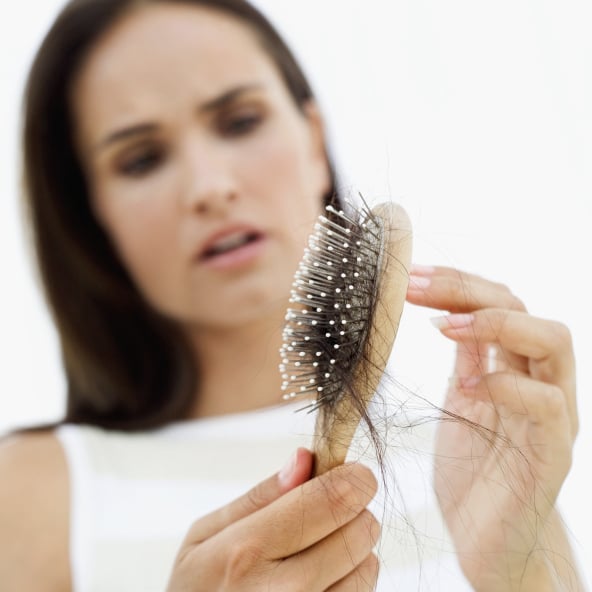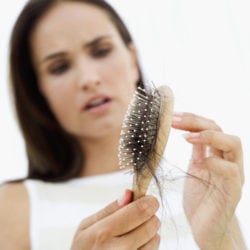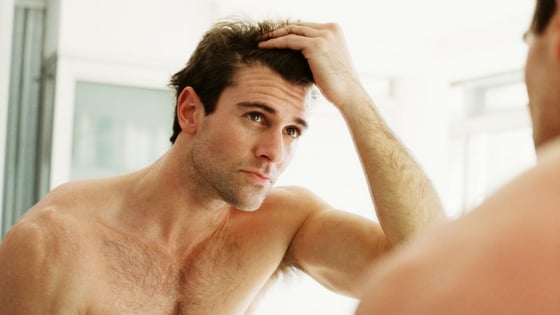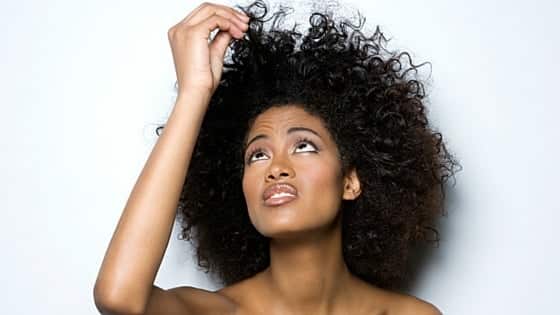For people suffering from hair loss or thinning, hair transplants can provide a promising and successful solution for long-term, natural-looking hair regrowth. Hair transplantation is a surgical procedure during which healthy hair follicles from one area of the scalp are removed and transplanted into areas of the scalp where hair is thinning or balding, encouraging thicker, fuller-looking hair across the entire scalp.
Tim R. Love, M.D., of Love Plastic Surgery & Aesthetics is a board-certified plastic surgeon who is nationally renowned for his skill and experience in hair transplantation, replacement, and restoration procedures. He worked closely with Dr. O’Tar Norwood, a pioneer in hair transplantation and restoration, and has remained at the forefront in his field as one of the country’s leading hair transplant specialists. Dr. Love has performed hundreds of hair restoration procedures in his 30+ years of experience, treating each patient with the individualized approach and compassionate care they deserve in the face of hair loss and balding.
If you have recently undergone a hair transplant or other type of surgical hair restoration procedure, taking care of your hair is now more important than ever. While hair thinning, hair loss, and baldness are heavily influenced by genetics, there are some steps you can take to help care for what you do have.
Understanding the Hair Growth Process
Hair undergoes a cyclical process characterized by three distinct phases: anagen, catagen, and telogen.
The anagen phase is the active growth stage during which cells within the hair follicles divide, generating new hair fibers. The duration of the anagen phase varies from person to person and can span anywhere between two to seven years.
Following anagen, the catagen phase serves as a brief transitional period. In this phase, the hair follicle undergoes contraction and readies itself for the telogen phase, which is a period of rest. The catagen phase typically lasts around two to three weeks.
Telogen represents the resting phase in the hair growth cycle. During this time, the hair follicle remains inactive for a duration of one to four months, though the hairs don’t yet shed. At the end of the telogen phase, the follicle reactivates, initiating the production of a new hair fiber. This process leads to the expulsion of the old hair, marking the beginning of a new cycle.
How Hair Regrows After a Hair Transplant
During the first few weeks after your procedure, you may experience shock loss, a normal—but discouraging—loss of transplanted hair. This is because during the procedure, the blood supply to the follicles is temporarily interrupted as they are transplanted from one part of the scalp to the area of thinning or balding, causing them to enter the telogen phase prematurely and shed hairs. However, though the hair itself is dead, the transplanted follicles are still “alive” and healthy, and once the follicles recover from the shock of transplantation, they will begin to enter the growth (anagen) cycle again and begin to regrow new hair.
After a hair transplant procedure, it can take up to three months for new hair to enter the anagen phase, or start growing. The rate of growth will vary for each person and depends on the type of surgery that was performed. It can take up to a year for most people to see transplanted hair fully growing in.
Following your hair transplant procedure, here is what you’ll see after…
1-2 months: Stubble-like growth appears as the hair follicles begin to take root.
3-4 months: You will start noticing new hair growth of very fine and soft hairs.
5-6 months: Transplanted hairs will be growing thicker and darker in color, and you should start seeing new coverage.
7-9 months: New hairs are starting to thicken and lengthen, though they are still fragile.
12 months: Transplanted hair is starting to look and feel like natural hair, with the same thickness, color, and texture as your pre-transplant hair.
Caring for Your Hair After a Hair Transplant
Taking care of your hair helps prevent oil buildup, breakage, and split ends, which can weaken the hair. The ideal hair care routine varies with every individual, but some basics can help keep your hair—whatever its personality—healthy.
- Less is more, especially when it comes to your shampoo. Although it’s designed to clean your hair, too much can strip your hair of the natural oils and minerals that keep it healthy and shiny. Many hair experts even discourage daily shampoo, suggesting you instead opt for an all-natural dry shampoo. You also want to avoid shampoos with excessive chemicals or fragrance. Look for products free of sulfates, parabens, dyes, GMOs, and mineral oils. These ingredients can dry out your hair, and cause buildup that dulls the shine.
- Be gentle with wet hair, as it’s far more fragile than dry hair. Instead of using a harsh cotton towel to dry your hair, opt for an old t-shirt. Try to comb and detangle your hair before you wash it and use a wide-toothed comb when you still have conditioner in your hair.
- Beat the heat, as much as you can. While completely cutting out heat treatments may not be possible, limiting them is best. Invest in a hairdryer that has a cooling option, or a straightener that works without being over 300 degrees. Heat-protective products are also recommended.
- A softer style works for your hair better than harsh up-dos. Loosen ponytails, braids, and any other hairstyle that puts a little stress on your roots. Additionally, try to limit products that make your hair too stiff or too big and opt instead for a little texture.
- See your stylist regularly to trim split ends. Cutting off those dead ends every six to eight weeks promotes healthier, faster hair growth.
Eating a healthy diet can also help keep your hair healthy after a hair transplant procedure, and there are a variety of foods that you can incorporate into yours that will give your hair the nutrients it needs to grow full and strong, including:
- Fish, such as salmon, tuna, or trout, are rich in protein and Vitamin D, as well as omega-3 fatty acids
- Walnuts are also rich in fatty acids, biotin, and vitamin E which help protect your hair against damage.
- Eggs, in addition to protein, have zinc, selenium, sulfur, and iron, which carries oxygen to your hair follicles.
- Blueberries are abundant in vitamin C, which is critical for circulation to the scalp.
- Spinach has beta carotene, folate, and vitamin C—all of which benefit scalp oils.
Sometimes, hair damage and loss can be attributed simply to age or other genetic factors; other times, it’s a result of daily habits. If you’re eating right but still having trouble with your locks, you may want to have your vitamin and mineral levels checked and take supplements as recommended by your doctor.
In addition to limiting product use, try to choose silicone-based products to limit the amount of damage done to your hair. Leave-in conditioners are also excellent for protecting hair and don’t forget about following the product directions precisely. Finally, be sure you trust your hairstylist—whether it’s a cut or a styling, they shouldn’t be hurting your scalp by doing their job.
Trust Your Hair Transplants to Love Plastic Surgery & Aesthetics
Successful hair transplants require choosing the right hair restorations specialist. Dr. Love and his Certified Hair Transplant Specialist Clara Prather are both members of the International Society of Hair Restoration Surgery, and they, along with the rest of the staff at Love Plastic Surgery & Aesthetics, are committed to restoring your hair, your youth, and your confidence. Dr. Love specializes in the gold-standard strip harvesting method and has performed hundreds of hair restoration procedures for patients from around the country.
Experience the difference and rediscover a better you at Love Plastic Surgery & Aesthetics. Call us today at 405-751-LOVE (5683) to schedule a consultation and find out how we can help you address your hair loss. We accept patients from across the country and offer out-of-town patients a $300 travel reimbursement in the form of 100 free grafts to help offset costs.



 As easy as it is to think of men when you hear the term “balding,” the sad truth is that not every hair commercial is to be believed. Although us ladies love our luscious locks, we aren’t exempt from balding patterns—no matter how much time or product we spend on making sure our hair looks perfect.
As easy as it is to think of men when you hear the term “balding,” the sad truth is that not every hair commercial is to be believed. Although us ladies love our luscious locks, we aren’t exempt from balding patterns—no matter how much time or product we spend on making sure our hair looks perfect.



